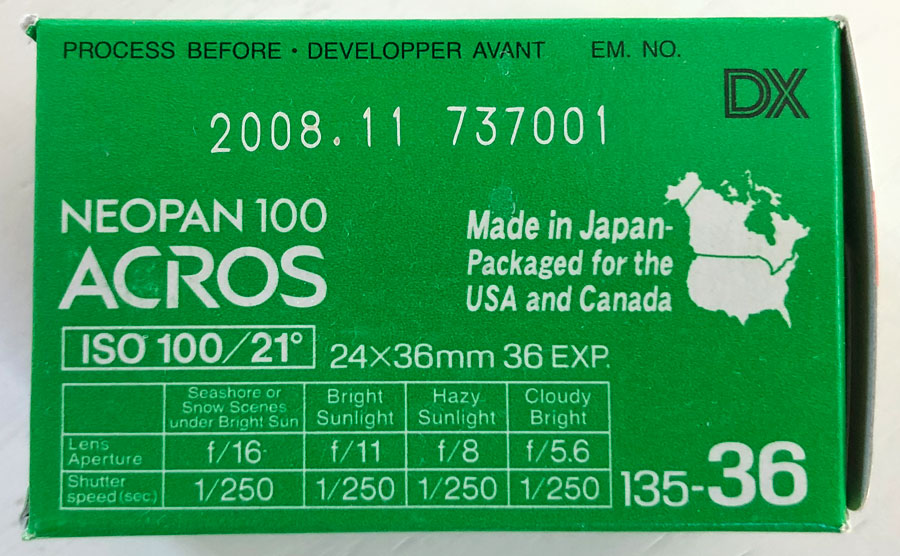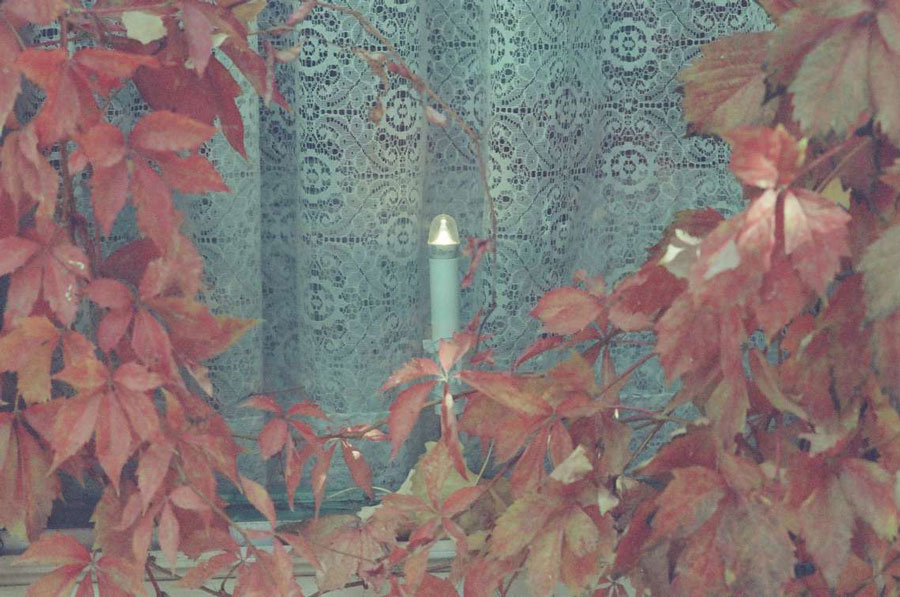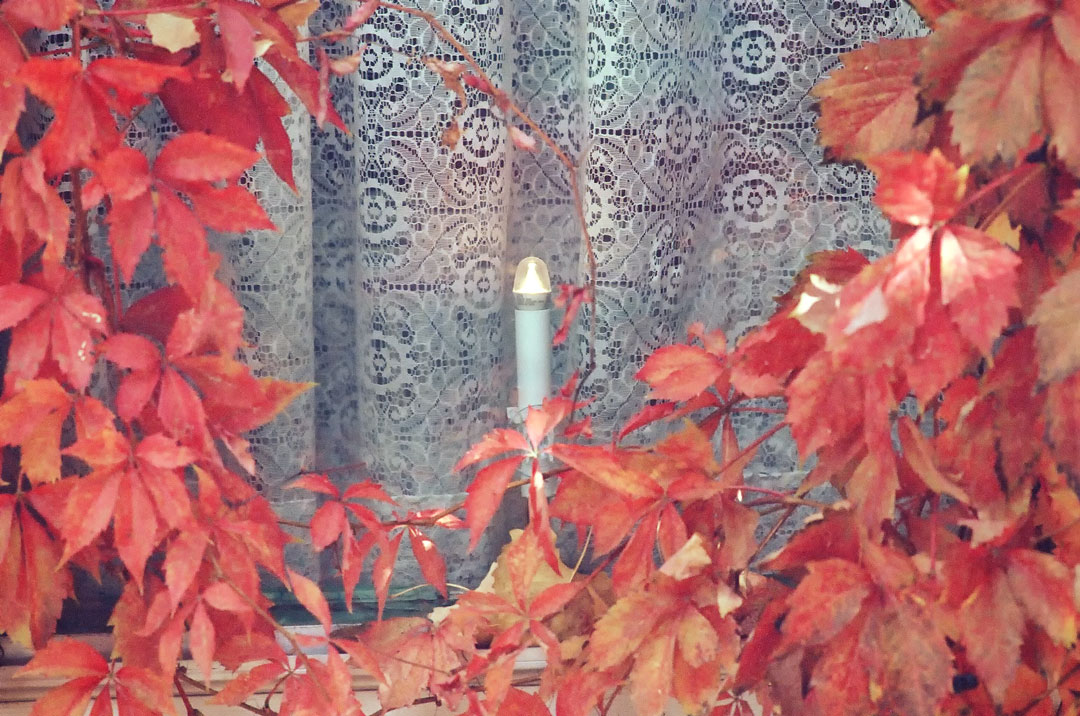Today’s Post by Joe Farace
Using expired film compounds the uncertainty, like jumping from an airplane with a parachute you just bought at an army surplus store. You don’t know who packed it or what it may have suffered in all the years since then.—Daniel J. Schneider
 I have a confession to make: All of the film that I’ve shot in my current series of Film Friday posts and other recent blogs about film photography, so far anyway, have been shot on expired film. How expired? The roll of Kodak Portra 160 I just wrote about had this written on the box: “Process before 09/2003.” Yup, that film expired 18 years ago!
I have a confession to make: All of the film that I’ve shot in my current series of Film Friday posts and other recent blogs about film photography, so far anyway, have been shot on expired film. How expired? The roll of Kodak Portra 160 I just wrote about had this written on the box: “Process before 09/2003.” Yup, that film expired 18 years ago!
What does that mean: Typically expired color film shows decreased sensitivity and contrast, increased grain, and color shifts. And I could see all of those conditions in the negatives I shot at ISO 160 with my Canon AE-1 Program, that itself is 37-years old. Film was processed by The Darkroom, although the image shown on the AE-1 Program post was processed using Photoshop. What did the original negative look like? Instead of boring you with this same image, shown below are a before scan and an after Photoshopped version of a different image from that same roll of Portra 160.
 Here are what some experts, pundits and Internet sage’s have to say on this subject: PetaPixel says, “One commonly cited rule of thumb for shooting expired film is to add an extra stop of exposure for every decade since the film expired. So if you’re shooting an ISO 1600 roll of film that expired 20 years ago, you should shoot as though it were an ISO 400 roll.” But that is not a universal opinion, so as always do your own tests. Based on my own tests with the aforementioned Portra 160, the film was, at least, one stop underexposed, so I intend to shoot any remaining rolls that I have at ISO 80 to, you know, see what happens.
Here are what some experts, pundits and Internet sage’s have to say on this subject: PetaPixel says, “One commonly cited rule of thumb for shooting expired film is to add an extra stop of exposure for every decade since the film expired. So if you’re shooting an ISO 1600 roll of film that expired 20 years ago, you should shoot as though it were an ISO 400 roll.” But that is not a universal opinion, so as always do your own tests. Based on my own tests with the aforementioned Portra 160, the film was, at least, one stop underexposed, so I intend to shoot any remaining rolls that I have at ISO 80 to, you know, see what happens.
Does black and white film react the same way to aging as color negative film? One opinion is that ”if you have black and white film that’s ten years out of date, you can shoot it at box speed. Older than that you will want to give it a bit more exposure, or a little more development time.” As Groucho Marx once said, “who are you going to believe? Me or your own eyes.” Here’s why: That 18-year old roll of Fujifilm Neopan ACROS 100 (above left) that I shot in my Canon AE-1 produced perfect negatives at the rated ISO setting. In my, admittedly limited experience shooting expired film—that would have never happened in the original film days— black and white film seems less affected by age than color negative film but both seem to react differently depending on the manufacturer as well as how and where they were stored. On to the next topic…
How was my particular film stored? It is generally thought that film typically expires sometime around three years after its manufacture date but in reality it may still be good for another five or six years if stored properly. The Emulsive website said, for “a roll of expired film that was cold stored (ideally in a freezer) from brand new, you can shoot it as if it just came off the production line. Even if the film expired a decade or two ago, you’ll still likely get a result that’s 95-100% that of a fresh roll.” (My own storage regimen is explained shortly.)
 Why shoot expired film anyway? In my own case there is one main reason and it’s also the same one that other people shoot it: As I’ve mentioned before there is an element of surprise in shooting film. For most people, you never really know what you’ve got until the film comes back after processing. If you don’t process it yourself and depending on what the film scene is like where you live, it could be up to two weeks until you receive the processed negatives or slide film back from the lab. Shooting expired emulsions amps up that surprise aspect of shooting film because you really, really don’t know what you’ll get until…
Why shoot expired film anyway? In my own case there is one main reason and it’s also the same one that other people shoot it: As I’ve mentioned before there is an element of surprise in shooting film. For most people, you never really know what you’ve got until the film comes back after processing. If you don’t process it yourself and depending on what the film scene is like where you live, it could be up to two weeks until you receive the processed negatives or slide film back from the lab. Shooting expired emulsions amps up that surprise aspect of shooting film because you really, really don’t know what you’ll get until…
In my own case the real reason for my shooting expired film is much simpler. When I switched to digital capture there was a lot of film left in my refrigerator and barring a few power outages and our move to Daisy Hill the film has been almost consistently refrigerated in a compartment that’s separate but next to deli meat and cheeses. Refrigerated but not frozen is a big difference and obviously that fact has an effect on how any film, including mine, ages. For the final word I’ll leave it to…
Bellamy Hunt of Japan Camera Hunter had this to say, which, I think, answers the question perfectly, “The problem is heat and radiation; that tiny but constant dose will eventually turn film into a fogged mess. And even with that degradation, that slow collapse, expired film can still take fantastic pictures. Colour shifts and lack of sharpness can elevate some shots from ordinary to surreal.”
PS. I don’t think I’ve beaten this subject to death so look for other posts on this subject and I look forward to hearing from you about your own experiences shooting expired film. Click Contact or comment on Instagram (@joefarace) to let me know you you think.
If you enjoyed today’s post and would like to support this blog allowing me to increase coverage of film photography, you can make a monthly contribution via Patreon. Memberships start at just $2.50 a month, with additional levels of support at $5 and $10 that includes special benefits. If subscriptions are not for you, that same linked page allows you to make a one-time payment. I recognize that the pandemic has had an adverse effect on many people’s incomes, so if you would prefer to just send some good thoughts my way, that’s appreciated too.